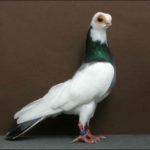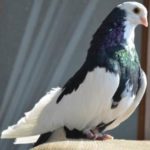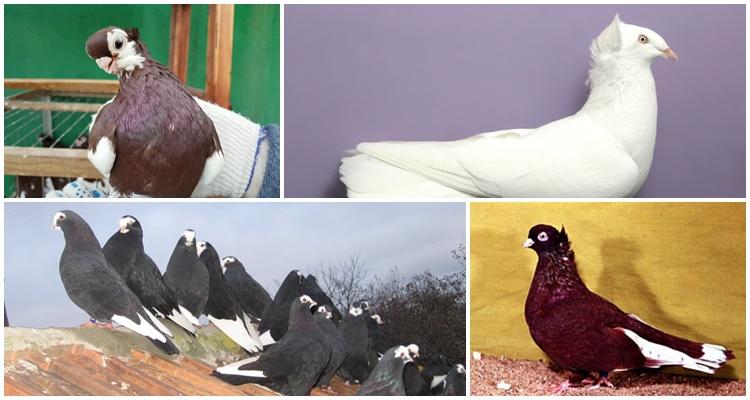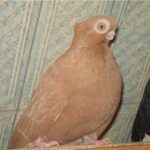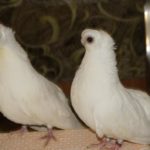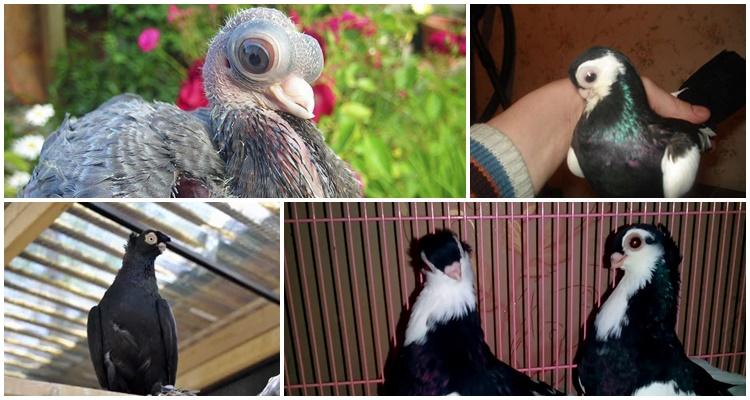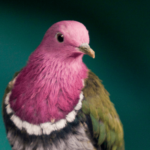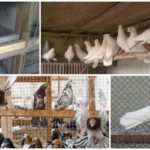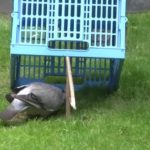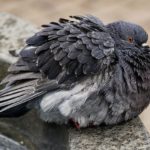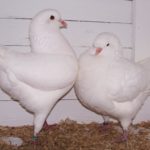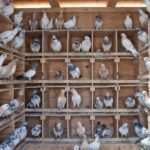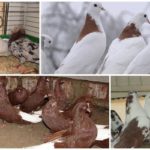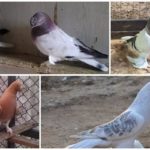Pigeon breeds are divided into groups that are characterized by common characteristics. Turman pigeons are distinguished by the beauty of their flight and their ability to perform various tricks and maneuvers. Let's consider the origin of the species and the external characteristics of birds, the varieties that are included in it. How to keep, feed, breed and care for pigeons at home.
Origin of tumbler pigeons
The breeding and selection of tumbler breeds was carried out in different European countries, in Russia and in Australia. The varieties were named after the area where they were obtained.The first tumblers were bred in the 17th century. In addition to the main breeds, the group includes peacock pigeons, Jacobins and others.
Appearance and characteristics
The main feature of tumblers is the ability to fly high and for a long time, and tumble during flight over the head, wing or tail. Due to their tendency to fly for long periods of time, they have strength and endurance.
The breeds differ in size, flight style, and plumage color. Common features are a small head with a convex forehead, large eyes, and a short beak. The iris of the eyes is dark. Turmans have an elongated neck, medium-length legs, widely spaced. The tail is raised and consists of 12-14 tail feathers. The average weight of the bird is 0.8 kg, the color is uneven.
Female tumblers have almost no developed maternal instinct; the lack of parental qualities is explained by the fact that many generations of pigeons were bred in an incubator. Many poultry farmers continue this tradition, using home incubators for breeding. The chicks are fed artificially.
Breed varieties
There is a variety of breeds within the group. In Russia, Kursk, Oryol and ribbon ones are famous. In neighboring Ukraine, Ukrainian and Odessa vertuns are popular. The group includes the Moscow Gray, Chisinau, Bryansk High-flying, Viennese, Carpathian, Krasnodar, and Australian breeds. Birds are divided according to external characteristics: with or without a crest, and by beak length: with a short, medium-length and long beak.
Rules of maintenance and care
Pigeons are social birds; they like to live not alone, but with their own kind.You can keep tumblers in a dovecote or in an aviary. The beginning of breeding should begin with the construction and arrangement of a poultry house and a walking area.
Hygiene
The pigeons' housing should be spacious (up to 2 birds can be kept per 0.5-1 sq.m. area), bright, and warm. Make the aviary from a mesh and cover it on top so that the birds cannot get into the teeth of predators. Inside the dovecote you need to maintain cleanliness: change the bedding, clean the perches, feeders, drinking bowls, and nests. In a dirty room, the risk of developing infectious diseases increases. Every month you need to disinfect the premises without the presence of birds. Spread a bedding of straw, hay, peat, sawdust in a layer of 5 cm.
Temperature conditions are up to 25 ˚С in summer and up to 0 ˚С in winter. In winter, if the farm is located in a region with a cold climate, the poultry house needs to be insulated. Humidity is 65-70%; if it is damp in the dovecote, the pigeons will begin to suffer from infectious diseases. Lighting is natural in summer, for which the windows are facing south or southeast, in winter - for at least 12-14 hours. Keeping the animals on short days slows down the sexual development of young animals.
There should be no cracks in the poultry house that create drafts. A healthy atmosphere can be maintained around the clock if an automatic ventilation system is installed in the dovecote.
Pigeons keep their bodies clean by bathing in water. While in the dovecote, they will take advantage of the opportunity if a bowl of water is placed inside.
Feeding
The basis of the diet of tumblers is grain of various types, to which grated vegetables, root vegetables, fruits, and potato tubers are added. Feeding frequency – 3 times a day, volume – 40-50 g per day.During molting, breeding and in cold weather, birds need to be fed intensively and given protein feed - legumes (up to 15% of the total feed). From spring until cold weather, feed fresh grass.
Add a little salt, chalk, and yeast to the mixture. You cannot feed meat, fish, fresh bread, sweet, spicy, salty, smoked and fatty foods. The source of fat can be sunflower and flaxseeds, but not animal products.
Necessary equipment
Turman pigeons do not like to spend the night on the floor; they prefer to sit on perches. They are made from wooden blocks with a diameter of 3 cm. Perches are installed along the walls, starting at a distance of 0.3 m from the ceiling. For reproduction, nests are installed according to the number of parental pairs. They are placed at the far end of the dovecote, in a quiet, cozy place. Nests are located in cages or on shelves. After the breeding season, they are removed, disinfected and dried.
Pigeon feeders They are made oblong, with the upper part covered with rods, so that the birds do not scatter the food. The material of manufacture is metal or plastic, which is easy to clean and wash. Drinkers are also made from light, strong, durable and easy-to-use material. It is desirable that they be automatic, then you will not have to pour water 3 times a day.
Also on the farm you need to have a broom, dustpan, bucket, sieve, and rake for caring for birds. And also a first aid kit, which will contain everything necessary in case the pigeons get sick: medicines and medical instruments.
Subtleties of breeding
In the spring, pigeons begin their breeding season. To obtain purebred tumblers, healthy, young birds without defects in exterior are selected from the adult population. The weight of females should not exceed the norm, otherwise they will not lay eggs.To control, you need to mark the date of laying of each egg in order to calculate when the chicks will appear.
In the nest of tumbler pigeons there are 1, usually 2 eggs. Incubation time is 16-19 days (the warmer the room, the faster the pigeons will hatch). Both parents feed the chicks until they are one month old. Then they move on to laying the next pair of eggs and incubating them. During the warm season they can produce several broods in a row.
Frequent diseases of birds
Pigeons of the Thurman breed group fly actively and can fly far from the dovecote. Communicating with birds, they can bring home infections: avian influenza, psittacosis, trichomoniasis, listeriosis, tularemia, pseudotuberculosis, campylobacteriosis. Some diseases are dangerous not only for pigeons, but also for humans.
The best way to avoid infection among livestock is regular cleaning and vaccination. Pigeons are vaccinated 2 times a year, in the off-season. Vaccinations are given at intervals of 2-4 weeks. The validity period of vaccinations is 0.5-1 year. Vaccination should then be repeated to continue developing immunity.
Thurmans are known among fanciers for their unusual flight, for which they are valued as the original pigeon breed. Even a beginner in pigeon farming can decide to breed birds; tumblers are unpretentious to food and maintenance.

